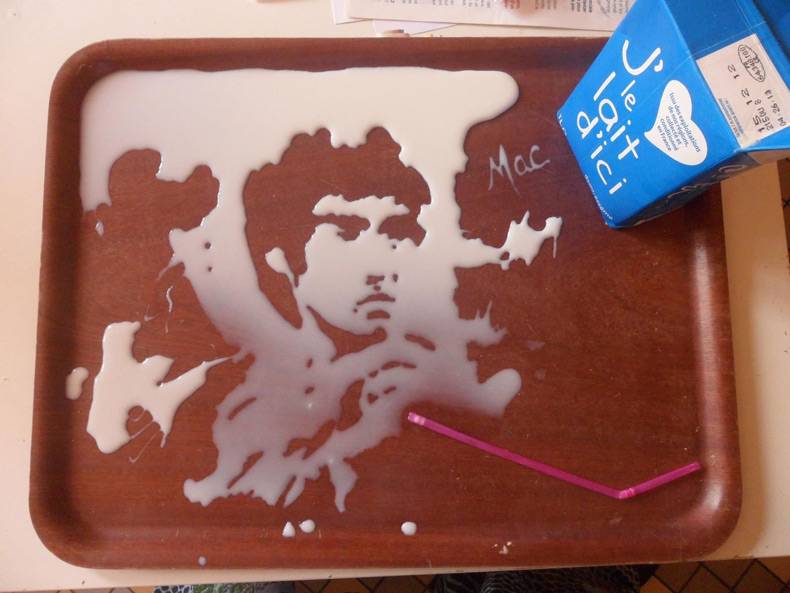(Asked by ‘Scottish’ Pete from Woolwich)
Hey Pete, how’s everything? Thanks for your question.
…And what a question it is. The modern two-way radio, which is a direct descendent of the WW2-era Walkie-talkie, first became recognizable in the years just before the outbreak of World War 2. Its origins are an interesting story in their own right (but I’ll condense it here).
Three names are usually mentioned with regards to the invention of the walkie-talkie…
The first is Canadian inventor Donald Hings (1907 – 2004), who invented an early version of the technology back in 1937 (although it wasn’t widely acknowledged or used). Then, there’s American inventor Al Gross (1918 – 2000), who patented the name ‘walkie-talkie’ for his own invention a year later in ’38. Because of the ubiquity of the name, Gross became the best known ‘inventor’ of the technology at the time, even though it had technically existed for 12 months beforehand. However, this isn’t to detract from Gross’ claim, because his version of the walkie-talkie was actually quite different from Hings’ (despite operating on the same essential principles).
Then, there’s Dan Noble (1901 – 1980), a Motorola employee who, although he definitely did not invent the technology, certainly did lead the team that created the widely used WW2-era walkie-talkies. Hings’ version of the technology wasn’t used by the military until 1942, which led to Dan Noble being credited with the invention.
So, make of that mess what you will…
Now, to go back further (and get to the meat of your question), here is a list of discoveries that led to the creation of the two-way radio.
James Clark Maxwell (1831-1879), a mathematical physicist (and one of a seemingly endless line of genius Scotsmen) demonstrated that electromagnetic waves could propagate in free space in his 1865 paper ‘A Dynamical Theory of the Electromagnetic Field’ (of which the most famous fan was Albert Einstein). This led German physicist Heinrich Hertz (1857 – 1894) to build on Maxwell’s pioneering work by conclusively proving the existence of electromagnetic waves in 1887.
After that, Serbian-American inventor, physicist, vegetarian and absolute genius Nikola Tesla (1856 – 1943) demonstrated the transmission of radio frequency energy in 1892. After that, Italian inventor Guglielmo Marconi (1874 – 1937) built a wireless system capable of transmitting signals over unprecedented distances in 1895 – which is pretty much the birth of radio.
This was an important area of study at the time; the first wireless telephone conversation took place in 1880 and was made by Alexander Graham Bell (1847 – 1922), who was another Scot, incidentally. A lot of people were working on similar technology, so it would not have been unlike the ‘space race’ of the 50’s and 60’s at the time.
Marconi went about taking over pretty much all business related to the invention of the radio (which was, eventually, credited solely to him) and, by 1907, he had established the first commercial transatlantic radio service (and also pretty much screwed Tesla out of any/all royalties he would have been owed. Nice).
Thanks to the work of Julio Cervera Baviera (1854 – 1929) the Spanish army became the first to use radio for military purposes (at least, as far as I’m aware, anyway) in the early 1900’s.
Canadian inventor Reginald Fessenden (1866 – 1932) (who also helped to develop sonar and TV, incidentally), invented AM radio (no, not the ‘Breakfast Show’ –it means that more than one station can broadcast signals) when, on Christmas Eve 1906, he played some violin and read from the Bible.
Eventually, all ships were equipped with radio transmission capability, with Marconi owning a total monopoly over ship-to-shore communication. Ship-to-shore contact became a subject of increased awareness and importance following the Titanic disaster of 1912 and radios began to be seen even more as a crucial safety measure in all areas of industry as a result. Look up the 1913 ‘International Convention for the Safety of Life at Sea’ (it has a Wikipedia page, I just checked) for more info.
Skipping forward a bit, now. Throughout the 1930’s, there were a ton of minor (and major) improvements made to the technology, more than a few made by Marconi and his engineers. Some really clever people made their mark on the fledgling technology here, but if I mention them all, we’ll never get to the end.
Oh, by the way, FM radio was subsequently invented by American electrical engineer Edwin Armstrong (1890 – 1954) in 1933.
By the late 30’s, Hings comes into the picture, as does the rising spectre of a terrifyingly advanced Nazi Germany. The race was on to have the best equipped armies out there fighting the Axis powers and the allies wisely put a huge amount of manpower into the development of portable radio communication. It was a decision which led directly to the rapid co-opting of Hings and Gross’ work, as well as the later improvements made by Noble.
This is a long and fascinating story (about which many books have been written), but, as a ‘potted history’ of sorts, I hope that answers your question.
Which Major Discoveries led to the Invention of the Two-Way Radio?




